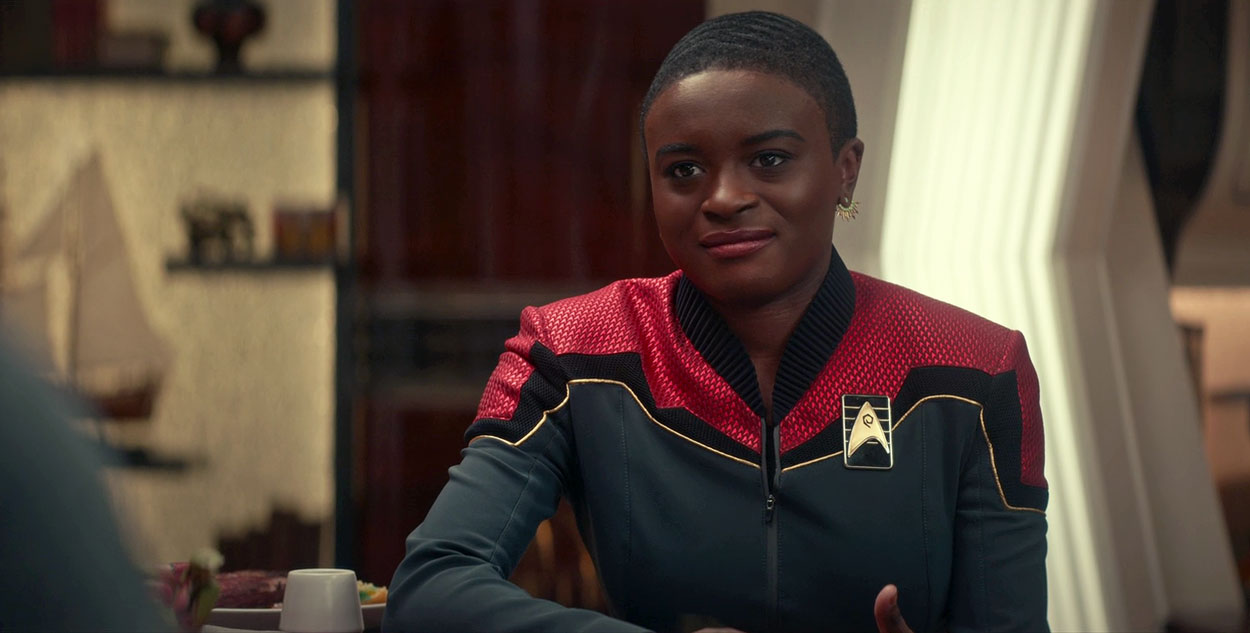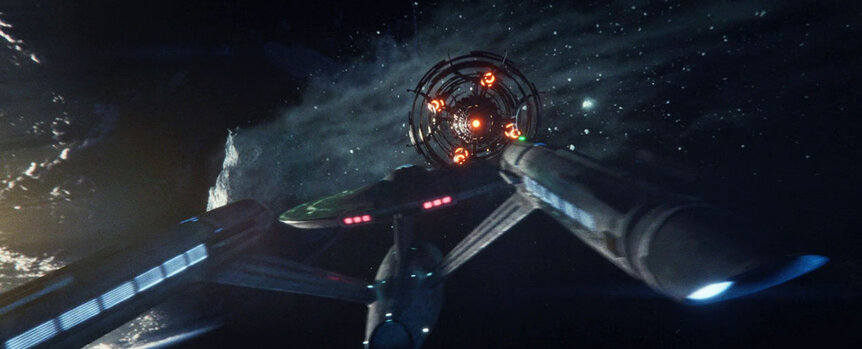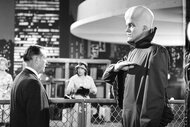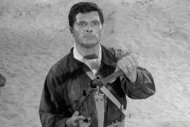Create a free profile to get unlimited access to exclusive videos, sweepstakes, and more!
'Star Trek: Strange New Worlds' co-showrunner Henry Alonso Meyers on making Uhura this week's MVP
"Children of the Comet" delivers some Original Series-style sci-fi as Uhura steals the show.

As good as the premiere episode of Star Trek: Strange New Worlds is, things get even better (Trek-ier?) in episode two.
The latest addition to Paramount+'s roster of Star Trek shows, Strange New Worlds continues to give off "strong The Original Series" vibes with its ambitious second episode, "Children of the Comet." In the inventive and riveting episode, Cadet Uhura (Ceila Rose Gooding) takes center stage (as does Gooding's considerable vocal talents) on their first away mission, as Captain Pike (Anson Mount) and the Enterprise crew struggle to negotiate with an alien race of monks charged with protecting a seemingly sentient comet that is on course to potentially destroy a planet. We also get an extended look at Pike's super swank (and huge) quarters aboard the Enterprise as the good captain hosts a dinner party for his crew before they encounter one of the most unique alien races the franchise has ever seen.
Music, and the means by which species can use it to transcend verbal communication, is one of the thematic tentpoles the episode's co-writer (and Strange New Worlds' co-showrunner) Henry Alonso Meyers weaves the character-driven story through. Myers recently spoke with SYFY WIRE about how he helped pull off this complex episode, which gives Uhura more to do in one hour than the character ever did in the last 56 years of Star Trek.
In Strange New Worlds' first two episodes, I'm confident they give Uhura more to do in two hours than the Original Series or original movies ever did.
[Laughs] All I can say is [The Original Series folks] were coming at it from a different place. For this show, our sort of maybe structural models were a little more in the TNG and DS9 mold, which were episodes that could iris in, on, you know, different members of the ensemble cast and kind of reveal things about them. We sort of felt like: "Look, we have a big, interesting cast. We can't just focus one person, you know? It's less interesting to me. It just feels like you get to have all these great stories. And that was one of the things that worked so well in TNG. Like, I loved the episodes that focused on Data or, you know, focused on Riker. Some of my favorite episodes were the Troi ones, like the one where she wakes up and she's a Romulan officer.
"Face of the Enemy." Great episode.
Yeah! Like, it's great. So there's also, like, a producorial decision that goes into it where it's easier to shoot a show where you give people stuff to do. But, also, we are trying to find good material. We have great actors and the goal is always to find material for great actors. And the other side of it is, Ceila is an incredible actor. Charisma for days. And what Ceila brings to it, it really reinforces what we are trying to do with these characters and give them beats or moments audiences may not be used to them having.
Fans definitely seem to have also gotten a kick out of Pike's massive quarters, with that dinner scene. I didn't know you could fit a whole condo aboard the Enterprise.
When we were talking about [building Pike's quarters] we discussed that every captain has their own style of management, their own style of being a captain, right? So what kind of a person is Pike? And we had this notion that like Pike is, you know, a "dinner party guy," but not a formal dinner party guy. He's the kind of guy who likes to cook, sure, but he involves you in the cooking. He kind of pulls you in and comes to the door, and creates conversation. And the whole idea is that he involves everyone in everything, and tries to make everyone feel like a part of it, and that seemed like a great metaphor for his style of command. And so the set came out of that. It came through character.
That dinner scene reveals a gut punch of an origin story for Uhura, and what brought her to enlist in Starfleet. How challenging was that scene to shape and write when breaking the episode?
A lot of it came from personal stories that came out of the writers' room and from some of our writers. We had some people who've been in the military and they kind of brought in some of their experiences. We just sort of thought: "Wouldn't it be a kind of an interesting left turn to have her not necessarily know why she's here or what exactly she wants to do with her time in Starfleet. The idea that she was driven by something that viewers wouldn't necessarily expect. We wanted Uhura to be the core of who she is, the character we have come to know: Talented and smart and good at her job. But it was nice to also have some vulnerability and history there, and to understand how she ultimately became this character.
And at the dinner, that's sort of how Uhura's tragic backstory moment came out. Where we learn she lost her family in a shuttle accident. Part of the goal of that dinner scene was to see it from Uhura's point of view. You're a young cadet, you're new on this ship. So the viewer is brought in front of the captain to experience the party from Uhura's perspective, which is [for Uhura] probably kind of intimidating. And she's worried because she knows that she's someone who kind of blurts things out about her life. And you think she's gonna maybe step in it and then she ends up revealing this heartbreaking backstory that kind of helped define her. It's something that, part of it was that we were honestly trying to build out a character arc for her.
So it's episodic missions or threats, but with season-long character arcs?
Exactly. Right. We're also trying to think about character arcs. So there are moments in that episode that we're setting up, that we will come back to, cause we want to give Uhura a journey for the first season. I think one of the challenges and fun things about doing this show is, I think a lot of people who are responding to early footage are wondering like, "Well, this doesn't look like the Uhura we know, or the Enterprise we know," and so on. And I'm totally fine with that. I actually believe in when you do a thing, it goes out in the world and people's responses are genuine. I wouldn't take that from anyone. Star Trek is a piece that is part of a collective dream that you join into. And in some ways, everyone in that dream has ownership of it. It's important that we give fans of Trek, fans of this character, especially, something similar but hopefully something that subverts expectations, as well.
You want there to be surprises and you want there to be emotional turns and, the problems of a 22-year-old Uhura, which we haven't really seen before, are very different from the problems of, a 28, 29 or 30-year-old Uhura. That feels like a good place to pursue for this show, and our goals with the characters.
My favorite shot of the episode is — well, I have a bunch of favorite shots — but the one where Uhura is on the transporter pad, about to beam over to the comet for the first time, and [the camera] is moving in on her and it's her first away mission. And she shuts her eyes. And then, on the comet, when she arrives, it hits her that this is where she is. And however many years into Star Trek we are now, in that moment, we don't want to forget to deliver that sense of wonder. We're calling the show Strange New Worlds and we want that feeling to be a big part of it. And you get exactly what we are going for, the mission statement of the show, really, in that one shot.
Strange New Worlds airs new episodes Thursdays on Paramount+.




























